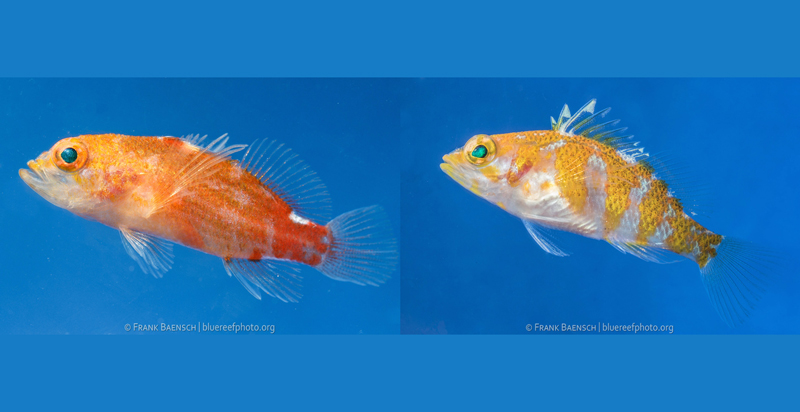Plectranthias winniensis and P. helenae are two species of this adorable group of basslets that grace the pages of Reef Builders today for very good reason. Reef Culture Technologies Hawaii has been trailblazing the captive rearing of various marine fish genera and species; first by captive spawning and breeding many different species of Centropyge, and then by rearing the larvae from eggs that can be collected through plankton tows off the shores of Oahu Hawaii.
Recent “captive raised” successes that are the result from fertilized eggs collected from plankton filter nets include popular aquarium fish like the yellow anthias, ornate wrasse, bicolor anthias and bluespotted grouper. Apparently all that work with various serranid fishes has paid off because RCT Hawaii has also successfully raised two even more exciting new species, Plectranthias winniensis and Plectranthias helenae.

Plectranthias winniensis is a slender species in this genus which is the least patterned of all its congeners. With an overall reddish body that fades to orange in the center of the body, Plectranthias winniensis is practically unadorned save for a small white spot that is usually visible on the base of the caudal peduncle.
This species is virtually unknown in the aquarium hobby but is is sometimes encountered by divers at depths around 30m (100ft) or greater. Plectranthias winniensis grows up to 10 cm long, but is usually encountered at a much smaller size, and it is found in Japan, the northwest Pacific Ocean, and Hawaiian Islands.


Meanwhile Plectranthias helenae is known in the aquarium hobby but only in Asia, albeit still rare and under the more commonly used Plectranthias sp. 4. We’ve featured P. helenae as an unknown species of Plectranthias before, but together with meristic observations from Frank Baensch and his captive reared fish, we can affirm that Plectranthias helenae is indeed among us. At its tiny size of just 2.5 cm the juvenile Plectranthias helenae raised by RCT Hawaii is a dead ringer in appearance for Plectranthias garrupellus but that species is only known from the deep waters of the west Atlantic Ocean.

The head spines, huge pectoral fins of Plectranthias winniensis and the large pelvic fins and dorsal fin extension of Plectranthias helenae are specializations to aid survival in the pelagic world. It’s amazing how differently these species have evolved – for being in the same genus. The P. nanus juvenile is 88 dph/25 mm TL. The juveniles of P. helenae were fully colored by 45 days post hatch while for P. winniensis the transformation completed by 80 days post hatch.





